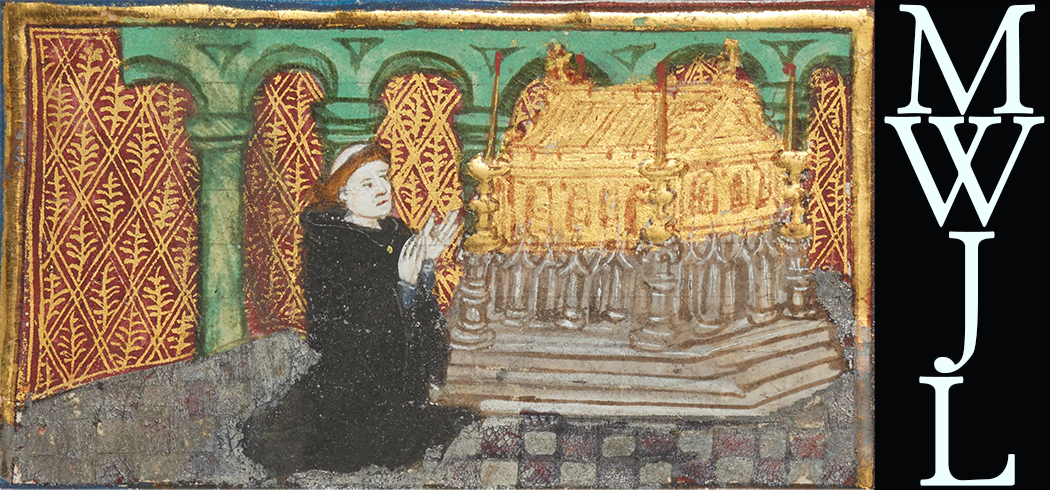One of the things I use to help me think through various issues in my teaching and scholarship are visualizations. Generally, these take the form of charts and graphs that illustrate aspects of the work, such as my layout of the speakers in late medieval place-and-scaffold drama alongside the various stages they're performing on, or my attempt to illustrate the corrosive influence of ideologically-motivated scholarship on the transmittal of ideas via networks. In both these cases, the visualization is intended to help you see the topic in a way that text may not provide. A mostly complete list of the visualizations I've put together and where they can be found is available on my professional site, as most of them are not Lydgate related and thus aren't germane to what this site is intended for.
The primary visualization that is attached to this project, however, is not a chart or graph. Rather, it is my model of the Clopton chantry chapel at Holy Trinity, Long Melford. Since the verses by Lydgate in that chapel exist on the walls rather than in a codex it becomes necessary to move around the space to see them all, as I've written about elsewhere. In thinking about transcribing and displaying the verses online, then, I wanted to be able to replicate some of the experience of being inside the chapel space and simultaneously viewing and not viewing everything at the same time. The model is my attempt to do so, and more about the peculiarities of this particular model and how it was constructed can be found here.
It should be noted that you can access the model in two ways through the site. The first is via the link in the paragraph above, which will take you to a view of the chapel as you just walk in, looking towards the carved hand (I hesitate to say manicule, as it's not pointing, but it serves the same function) at the beginning of the verses. The second is by clicking on the "view model" link in the upper left corner of verses from the chapel (where the icon for the gathering, leaf, and page are in those codices I have a collation for). Clicking on that link will take you to the model, but looking at the particular verse you navigated to the site from. In both cases, however, you can center your view on other items in the space (indicated by a note in the upper right of the model) and click to go to the transcription and facing image of that item.
One final note: while I don't think they're particularly useful in terms of navigating the items on this site (the "Works" and "Manuscripts" tabs above are more useful in that regard) or speaking to specific aspects of the Lydgate corpus I also have two visualizations built in part on the work I did theorizing the prototype of the Advanced Research Consortium's BigDIVA project. The intent for these was to provide a quick visual reference regarding how Lydgate's works connect with their material witnesses, the other works they are currently found alongside, and the other authors that are found alongside Lydgate in his material corpus. This was done in the service of a larger intellectual interest I have in the imperfect encoding and transmission of information in material objects. As such, they exist primarily as an aid for talks given at the International Congress on Medieval Studies at Western Michigan University and the International Medieval Congress at the University of Leeds, but may be useful for someone thinking about how particular poems relate to each other across multiple witnesses. A two-dimensional network visualization tool can be found here, while a three-dimensional visualization of the same data can be found here, albeit with reduced functionality currently.. Both of these items should be considered prototypes—really one-offs for illustrative purposes—but they are included in case others find them useful.

